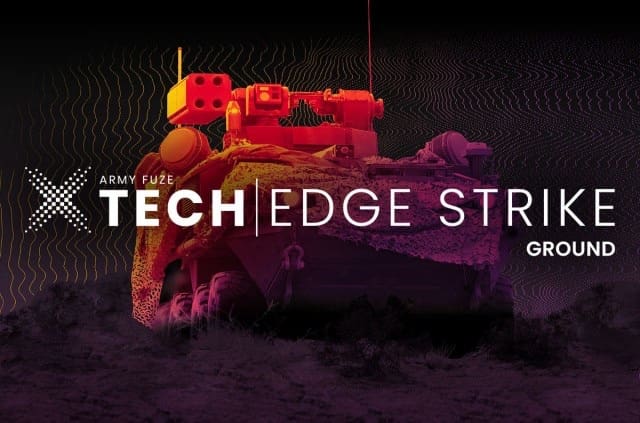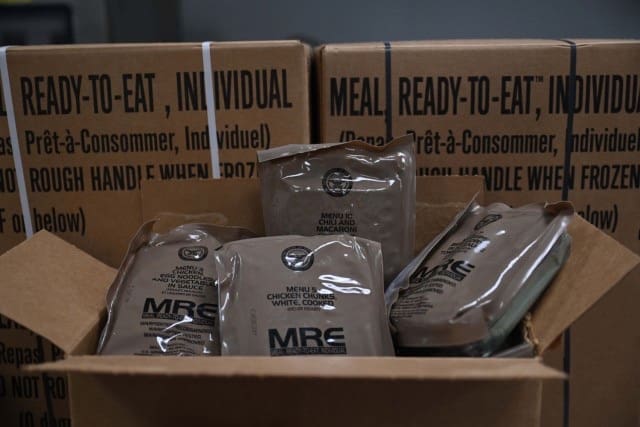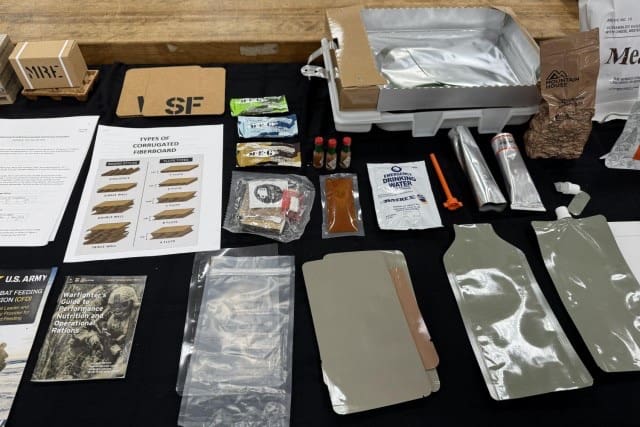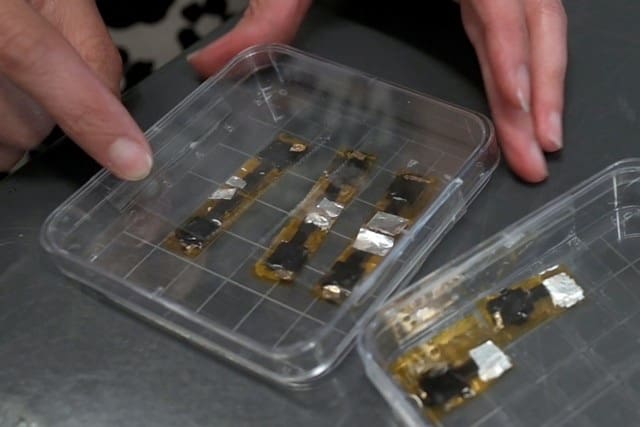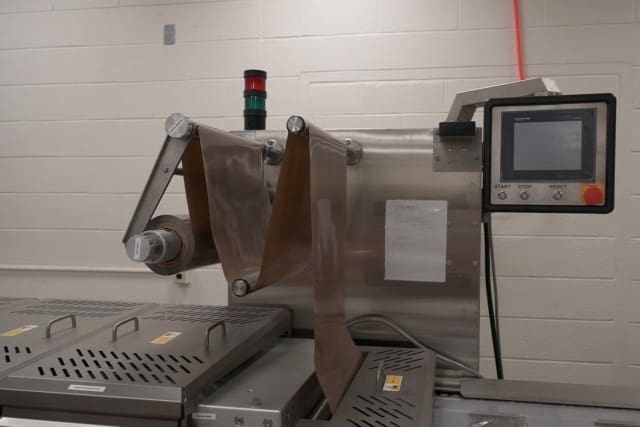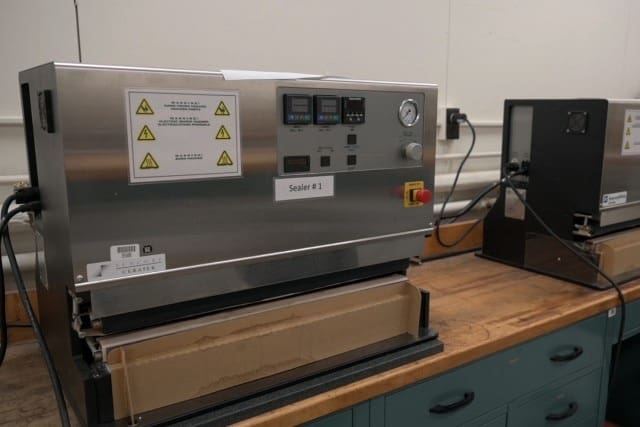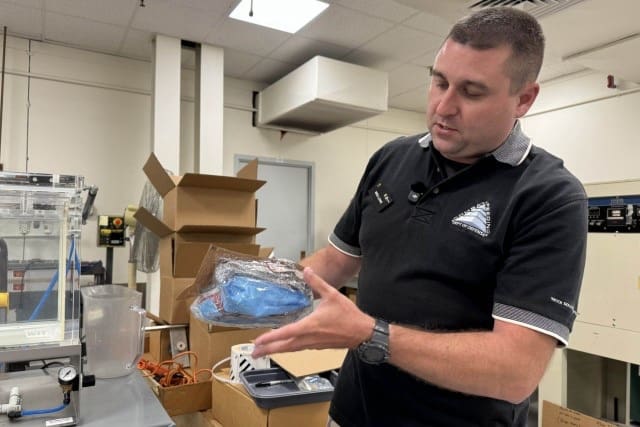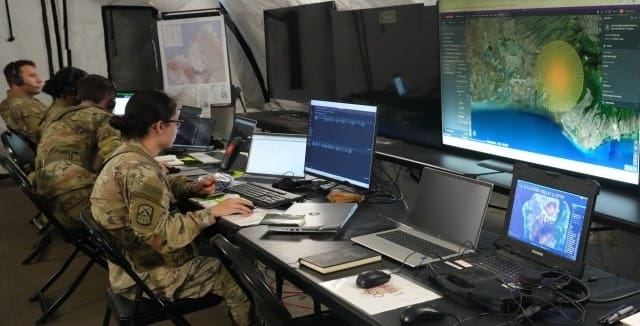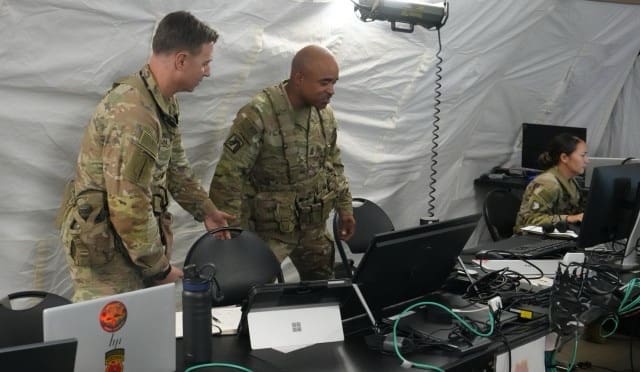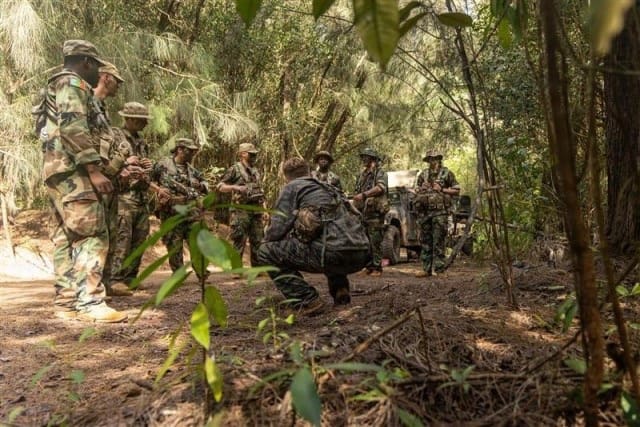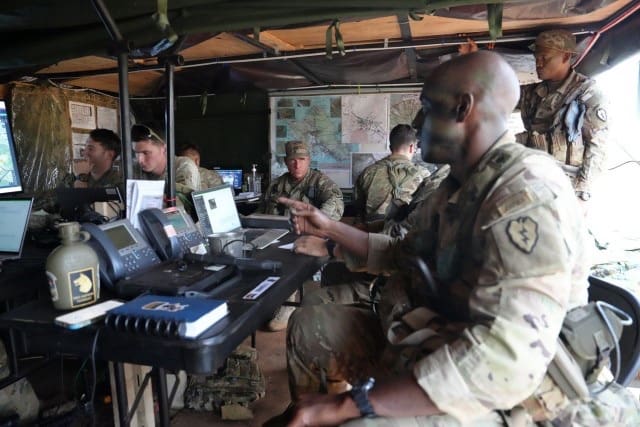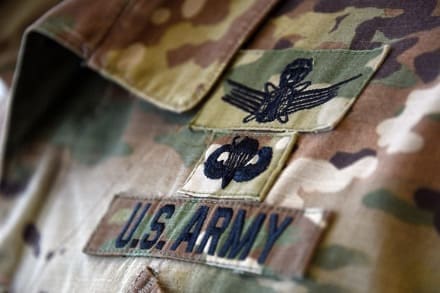WASHINGTON — The Joint Interagency Task Force-401 established as the Department of War’s premier organization for countering small unmanned aerial systems marked its 100th day of operations earlier this month. The task force was created to consolidate resources and deliver affordable counter-drone capabilities to protect U.S. personnel and facilities at home and abroad.
“From day one, our mission has been to move with speed and purpose to keep pace with this evolving threat,” said Director of JIATF-401 Brig. Gen. Matt Ross. “I am incredibly proud of the men and women of JIATF-401. In just over three months, they have demonstrated our ability to rapidly integrate across the department and within the interagency, deploy counter-drone capabilities, and enhance protections for our forces overseas and on our own southern border.”
In its first 100 days, JIATF-401 successfully transitioned the counter-sUAS mission from a community of interest to a community of action. The task force is delivering tangible capabilities, streamlining policy, and building the whole-of-government coalition required to counter the evolving sUAS threat to the homeland and U.S. forces abroad.
Line of Effort 1: Defend the Homeland
JIATF-401 has taken decisive action to defend the homeland by strengthening defenses against sUAS threats. In addition to delivering state-of-the-art counter-sUAS equipment, JIATF-401 is revamping policy and expanding authorities to defend troops and defense-critical infrastructure.
“Countering drones in the homeland is not just a technology problem,” Ross said. “Our greatest challenge is having trained people, the right policy, and the right process.”
New guidance to commanders consolidated all Department of War counter-sUAS policies into a single document, providing clarity to installations about their authority to engage drone threats in and around their perimeters.
Through the Replicator 2 initiative, JIATF-401 developed a prioritized list of asset locations to guide resource allocation. Site assessments were conducted at key installations to identify and address defense gaps.
Along the southern border, where thousands of drone incursions were reported last year, JIATF-401 rapidly delivered solutions to enhance air domain awareness and counter-drone capabilities.
“In less than 60 days — a process that traditionally takes two or three years — JIATF-401 assessed and validated capability gaps on the southern border and translated them into the Joint Task Force-Southern Border requirements document vetted through U.S. Northern Command and the services,” said Maj. Anthony Padalino, JIATF-401 response team member. “With director approval already secured, we are driving toward an initial delivery of approximately $18 million in counter-sUAS capability to the border in January 2026.”
In the National Capital Region, the task force has been instrumental in coordinating with interagency partners to improve the region’s integrated air defense.
“Our goal is to integrate sensors, effectors, and mission command systems into a responsive, interoperable network that protects service members and American citizens alike,” Ross said. “Countering drones is not just a battlefield problem — it’s a homeland defense imperative.”
Line of Effort 2: Support Warfighter Lethality
JIATF-401 is committed to equipping warfighters with the most effective counter-drone technologies and tactics. Operation Clear Horizon assessed current counter-sUAS systems and identified the need for an enterprise-wide mission command system.
The task force is also fostering rapid technological advancement through a digital marketplace for vetted counter-sUAS solutions and actively supports testing events to drive procurement of the latest capabilities, such as low-collateral defeat systems.
Line of Effort 3: Joint Force Training
JIATF-401 is leading the charge to build a unified defense against sUAS. The task force hosted a summit that brought together more than 50 federal agencies to align efforts and close policy gaps.
“Countering drones is a team sport,” Ross said. “We have to work together, share information, and leverage each other’s strengths if we’re going to stay ahead of this threat.”
This collaborative spirit extends to training. The task force assumed oversight of the Joint Counter-sUAS University at Fort Sill, Oklahoma, and partners with the FBI to support its National Counter-sUAS Training Center, preparing law enforcement for events like the 2026 FIFA World Cup.
“Lots of people talk about the risk of action. I want to think about the risk of inaction,” Ross said. “What might happen to the American public if we don’t come together to solve counter-sUAS problems?”
Looking Ahead
JIATF-401 is focused on expanding its authorities to protect all Department of War facilities and fielding new capabilities to high-priority sites.
“When our agencies work together, there is no challenge we cannot meet,” Ross said.
U.S. Army Public Affairs





